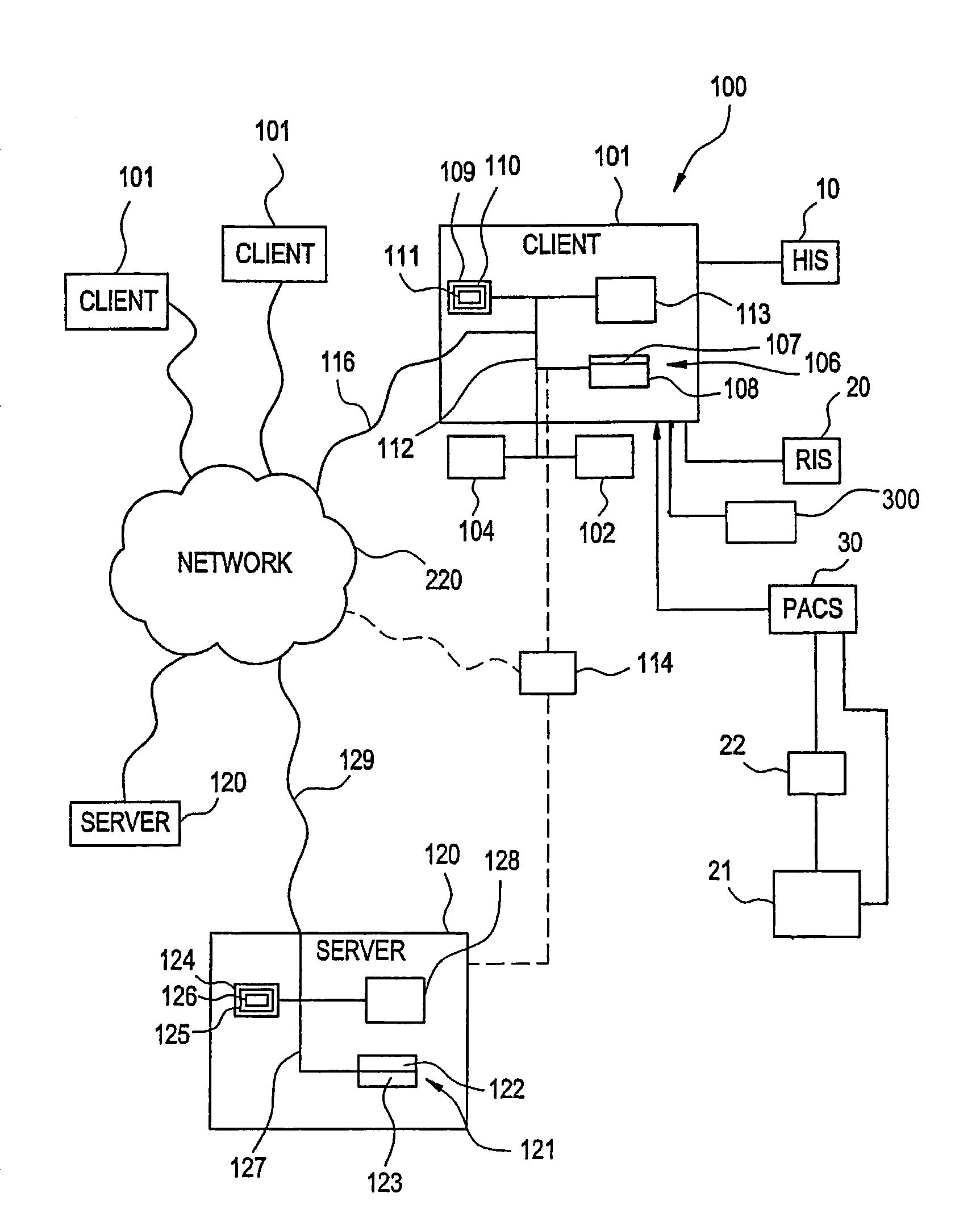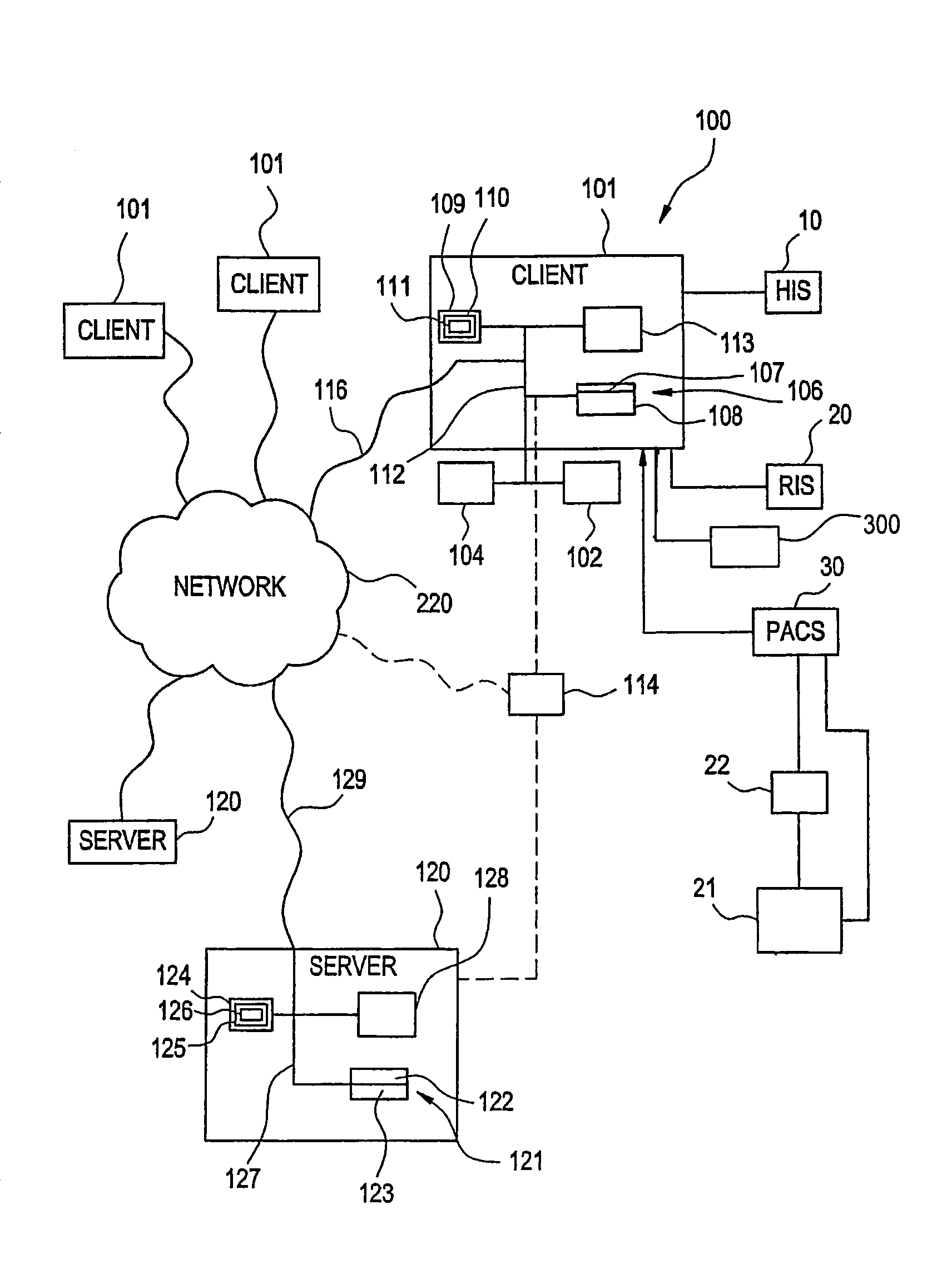Method of data mining in medical applications
a data mining and medical application technology, applied in the field of databases, can solve the problems of insufficient current reimbursement, deficient database creation, and a large number of healthcare consumers and service providers, so as to improve the productivity and quality of radiologists, improve workflow and diagnostic accuracy, and enhance productivity and workflow.
- Summary
- Abstract
- Description
- Claims
- Application Information
AI Technical Summary
Benefits of technology
Problems solved by technology
Method used
Image
Examples
Embodiment Construction
[0023]The present invention relates to creating databases where data mining for medical applications can be performed.
[0024]According to one embodiment of the invention as illustrated in FIG. 1, medical (radiological) applications may be implemented using the system 100. The system 100 is designed to interface with existing information systems such as a Hospital Information System (HIS) 10, a Radiology Information System (RIS) 20, a radiographic device 21, and / or other information systems that may access a computed radiography (CR) cassette or direct radiography (DR) system, a CR / DR plate reader 22, a Picture Archiving and Communication System (PACS) 30, and / or other systems. The system 100 may be designed to conform with the relevant standards, such as the Digital Imaging and Communications in Medicine (DICOM) standard, DICOM Structured Reporting (SR) standard, and / or the Radiological Society of North America's Integrating the Healthcare Enterprise (IHE) initiative, among other sta...
PUM
 Login to View More
Login to View More Abstract
Description
Claims
Application Information
 Login to View More
Login to View More - R&D
- Intellectual Property
- Life Sciences
- Materials
- Tech Scout
- Unparalleled Data Quality
- Higher Quality Content
- 60% Fewer Hallucinations
Browse by: Latest US Patents, China's latest patents, Technical Efficacy Thesaurus, Application Domain, Technology Topic, Popular Technical Reports.
© 2025 PatSnap. All rights reserved.Legal|Privacy policy|Modern Slavery Act Transparency Statement|Sitemap|About US| Contact US: help@patsnap.com


